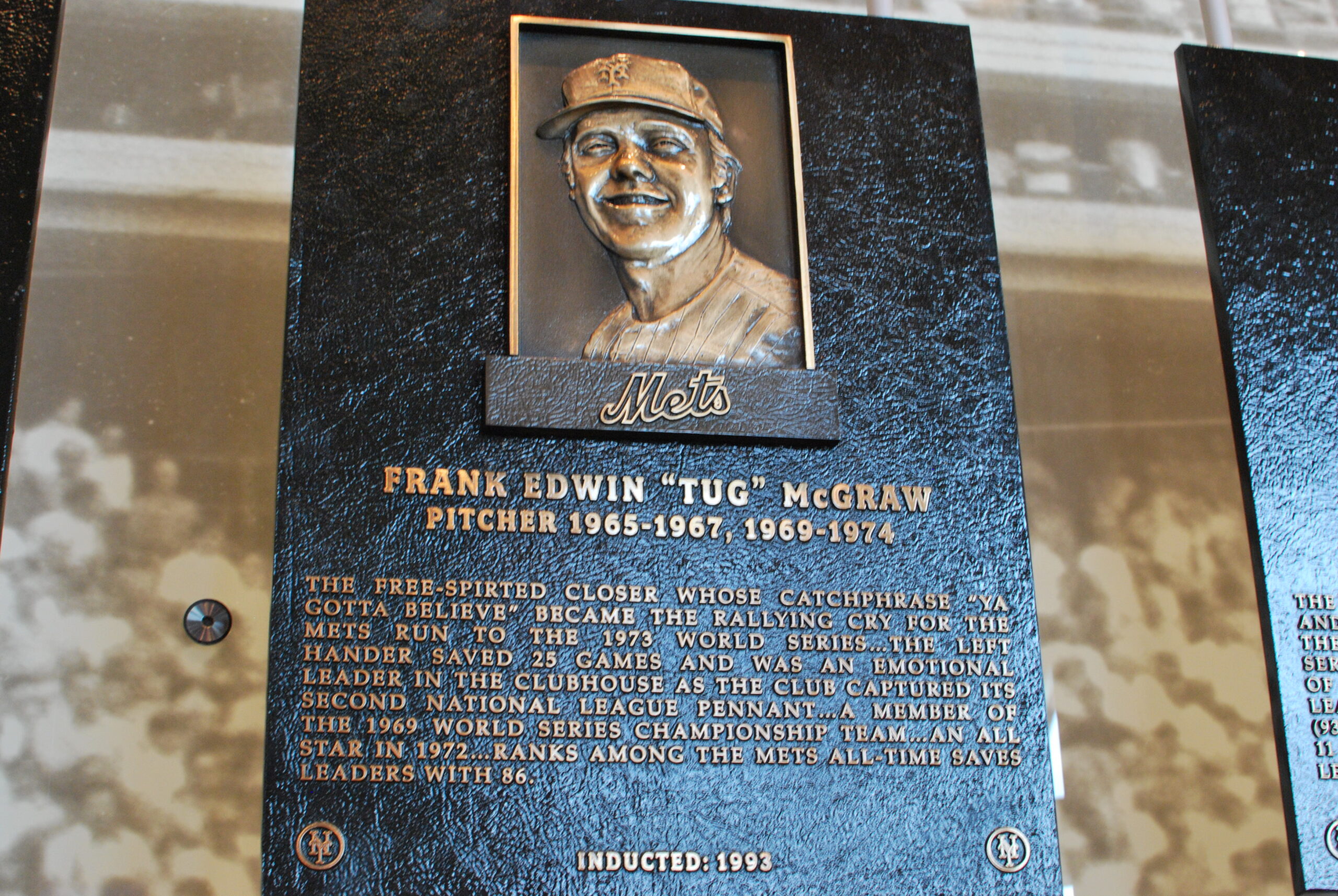There are eight relief pitchers enshrined in the Baseball Hall of Fame, most from the “closer” era, to the exclusion of those of yesteryear. Voters are clearly more impressed with the statistics of the closer. However, there was a time when baseball teams didn’t have closers. Instead, the top reliever was known as an “ace” or a “fireman.” His manager didn’t bring him in every time there was a save opportunity, but rather when he believed the game hung in the balance. The job description was thus: Be ready from the sixth inning on, even if tied or losing. Enter with runners on base and “put out the fire” i.e., pitch out of jams. Pitch multiple innings.
Relievers who pitched when the save wasn’t important shouldn’t be judged by save stats. Players should be judged by comparing them to their peers during the eras in which they played. There have been many relievers deserving of consideration but overlooked, but let’s just look at a selected few from the pre-closer era. Note their ratios of innings pitched to games.
Pre-Closer Relief Pitchers Left Out of the Hall of Fame
The Baron of the Bullpen
Roy Face, Pittsburgh Pirates (1953-68), Detroit Tigers (1968), Montreal Expos (1969); Career record 104-95, 191 saves, 3.48 ERA, 848 games (27 starts), 1,375 IP
Roy Face, 95, known as “ElRoy” to Pirates fans, still makes occasional public appearances on behalf of his former team. Ask him about today’s closers and their one-inning saves. Then, stand back as he practically spits out, “I had to pitch three innings to get mine!”
The right-handed forkball specialist generally was the Pirates’ first option from the bullpen when the game was on the line. In 1959, he was an astounding 18-1 with a 2.70 ERA in 57 games out of the pen when he was the beneficiary of several Pirates comebacks. As a Pirate, he led the National League in appearances twice and saves three times. Face also saved three games in the 1960 World Series before blowing the save in Game 7. The Pirates came back and defeated the New York Yankees in that Series. His omission from the Hall of Fame is likely due to having been used differently than today’s relief pitchers.
The Doctor of Kinesiology
Mike Marshall, Tigers (1967), Seattle Pilots (1969), Expos (1970-73), Los Angeles Dodgers (1974-76), Atlanta Braves (1976-77), Texas Rangers (1977), Minnesota Twins (1978-80), New York Mets (1981); Career record 97-112, 188 saves, 3.14 ERA, 724 games (24 starts), 1,386-2/3 IP
Mike Marshall was a right-handed master of the screwball. The Expos began to use him strictly in relief in 1971. He flourished in 1972 when he led the NL in appearances with 65 and was 14-8 with a 1.78 ERA. In 1973, he led the NL with 92 appearances, then a major league record, and 31 saves. However, he was also difficult with managers, coaches, and front-office personnel. Finally, the Expos had enough and traded him to the Dodgers for the 1974 season.
In 1974, in perhaps the most amazing season a reliever ever had, Marshall set a major league record with 106 appearances, pitching 208 2/3 innings, going 15-12 with 21 saves and a 2.42 ERA for the eventual World Series champions. That year, he became the first relief pitcher ever to win the Cy Young Award. When asked by reporters to explain his durability, he attributed it to kinesiology (the study of body mechanics) and insinuated they were too stupid to understand it. (Marshall would earn a Doctor of Philosophy in exercise physiology in 1978 while playing.) He was thought rude and haughty and perhaps was kept out of the Hall because he alienated so many voters.
Went down a baseball-reference rabbit hole, like you do and read up on Mike Marshall, the first reliever to win the Cy Young. Holds the record for most appearances by a pitcher in a season with 106 games in 1974.https://t.co/zcpbk0doOG
— Jomboy (@Jomboy_) December 29, 2019
In 1979, Marshall was reunited with Gene Mauch, his manager in Montreal, joining the Twins as a free agent. There Marshall enjoyed one more great season, saving 32 games and setting an American League record with 90 appearances.
Oh – and he was the first pitcher in the history of the Pilots to hit a home run.
“I Never Smoked AstroTurf”
Tug McGraw, Mets (1965-74), Philadelphia Phillies (1975-84); Career record 96-92, 180 saves, 3.14 ERA, 824 games (39 starts), 1,514-2/3 IP
Fun-loving screwball specialist Tug McGraw did much to uphold the old baseball stereotype that left-handers are, uh, different. Asked to compare grass and AstroTurf, he said, “I never smoked AstroTurf.” On the mound, however, he was an effective multi-inning, late-inning reliever for the Mets and Phillies, helping each team to two pennants and one World Series title. In 26 postseason games, he was 3-3 with a 2.24 ERA and eight saves, including a two-inning save in the clinching Game 6 of the 1980 World Series for the Phillies. In that season, he had a 1.46 ERA and 20 saves. Besides being one of the better relief pitchers, he was an ambassador for the game but was never given serious consideration for the Hall of Fame.
The Dodgers’ Workhorse
Ron Perranoski, Dodgers (1961-67, 1972), Twins (1968-71), Tigers (1971-72), California Angels (1973); Career record 79-74, 178 saves, 2.79 ERA, 737 games (one start), 1,174-2/3 IP
Ron Perranoski did his best work with the Dodgers and Twins. The sinker-balling lefty thrived on work, and Dodgers manager Walter Alston gave it to him. In 1962, Perranoski pitched in a then-major league record 70 games, finishing 6-6 with a 2.85 ERA and 19 saves. In 1963, he pitched in 69 games and finished 16-3, then a record for a lefty reliever, and notched 21 saves. His 1.67 ERA would have led the NL if he’d had enough innings to qualify. He surrendered just one home run that year. That Dodgers team swept the Yankees in the World Series, effectively ending the Ruth/DiMaggio/Mantle dynasty.
Perranoski was also a key member of the Dodgers teams that won the 1965 World Series and 1966 NL pennant. Traded to the Twins for the 1968 season, he would get plenty of work there, too. He would help his new team win the new AL West Division in 1969 and 1970. Perranoski led the AL in saves both years, with 31 and 34, respectively. For his career, he appeared in more than 65 games and pitched over 100 innings seven times.
Quiz
Dan Quisenberry, Kansas City Royals (1979-88), St. Louis Cardinals (1988-89), San Francisco Giants (1990); Career record 56-46, 244 saves, 2.76 ERA, 674 games, 1,043-1/3 IP
One day during 1980 spring training, Royals reliever Dan Quisenberry sought out the advice of the Pirates’ Kent Tekulve, like “Quiz” a right-handed submarine pitcher. Eventually, the pupil’s stats would surpass the teacher’s. Quisenberry led the American League in appearances three times and saves five times.
Absurdly, in 1984 reliever Willie Hernandez of the World Series champion Tigers claimed both the AL Cy Young and MVP Awards, when he had 32 saves. Tigers manager Sparky Anderson had lobbied hard for Hernandez to win both awards all season long, based on Hernandez having blown only one save all year. The Tigers won the AL East by 15 games. Quisenberry led the AL with 44 saves for a Royals team that won the AL West by three games.
The Rubber Band Man
Kent Tekulve, Pirates (1974-85), Phillies (1985-88), Cincinnati Reds (1989); Career record 94-90, 184 saves, 2.85 ERA, 1,050 games, 1,436-2/3 IP
Despite not matching Quisenberry’s numbers, Kent Tekulve would have been a deserving Hall of Fame candidate as well, being one of the most durable and effective relief pitchers of his era. In his final year, he retired in mid-season from his hometown Reds with a then-NL record 1,050 career appearances. Tekulve’s best years were 1978 and 1979, when he appeared in 91 and 94 games, respectively, and saved 31 games each year.
“Teke” pitched in five games in the 1979 World Series, where he was 0-1 with three saves, including clutch multi-inning saves in Games 6 and 7 on the road to lead the Pirates to victory over the Baltimore Orioles. He made at least 70 appearances in 10 seasons and pitched over 100 innings seven times. He also played left field for one batter in 1979, catching a fly ball to preserve a win.
Photo Credit: “Tug McGraw Hall of Fame Plaque” by slgckgc is licensed under CC BY 2.0.






